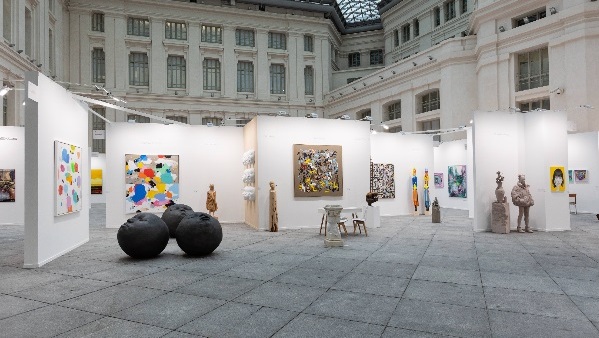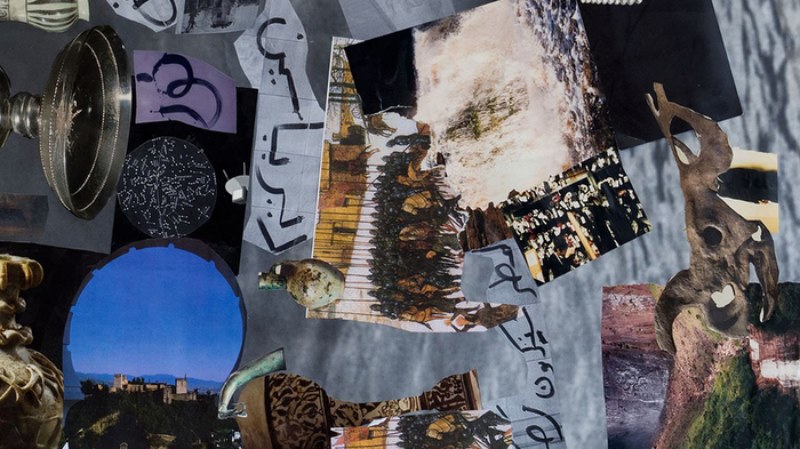by Elvira Rilova
A retrospective tour around the thirtieth edition of the most important art fair in Spain certainly provides an image of the world with all its diversity: 190 galleries, 20 countries and some 3.000 artists, with traditional formats such as painting, sculpture and photography, or alternative means just like video, performance, installation or new technologies. The most varied trends and techniques –from the 20th century avant-garde to the contemporary digital creation– come together in February for five intense days in Madrid, in this event that represents one of the fundamental meetings of international art circuit.
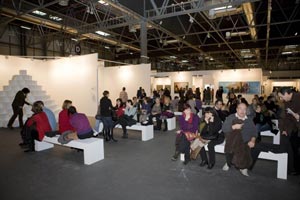 This time, the rain during the first days announced a specific climate, an underground current. The economic crisis was threatening ARCO shaped like a radical questioning. However, as the first surveys show, the balance has been positive. The good news was that it all had changed. After the speculative orgy of the new century –whose death rattles were celebrated by English artist Damien Hirst while organizing a millionaire auction at Sotheby’s for his works just before markets went bankrupt–, the present crisis represents a good moment for reconversion.
This time, the rain during the first days announced a specific climate, an underground current. The economic crisis was threatening ARCO shaped like a radical questioning. However, as the first surveys show, the balance has been positive. The good news was that it all had changed. After the speculative orgy of the new century –whose death rattles were celebrated by English artist Damien Hirst while organizing a millionaire auction at Sotheby’s for his works just before markets went bankrupt–, the present crisis represents a good moment for reconversion.
It’s just that, in this case, the instability is celebrated as a guarantee of survival, for ARCO represents a crucial mechanism for art scene in Spain. Its existence turns to be fundamental for museums, foundations, corporations and galleries all over the country (as showcase for out-of-the-capital galleries). Its influence during these five days involves the whole Madrid: other spaces and institutions complement it, as external parts of it
(exhibitions at El Reina Sofía, Cervantes Institute, Casa Encendida, etc.) or spontaneously (autonomous fairs such as ART MADRID, JUST MADRID, etc.). The critics for ARCO have never doubted on its relevance, instead they come up from the absence of a defined project, due to the lack of an authentic personality. Discordant voices agreed that the reformulation of the current hybrid model was necessary. That’s the reason why this edition has been a decisive one.
The problem was caused by ARCO’s intention, during its evolution, of complying with conflicting fronts: the leveling of Spanish art regarding to the international scene and an exclusive pretension related to the audience (i.e. a didactic effort). Nowadays, it seems to be impossible to fulfill these dissimilar goals. Such aspiration, nevertheless, was once justified: the division happened because ARCO
entails more than an art fair. Its first editions set it up as social and cultural phenomenon, where the identity of a country leaving back Franco’s regimen was defined. ARCO is a symbol of an economically expanding Spain and its relation with Europe. The crisis also blurs this project, branded a mirage by some people. The truth is that modernity eagerness, just as every desire, was probably kind of hasty and
superficial.
Thus, thirty years after its origins, ARCO exhibits the loose ends of those youthful good intentions and there’s an emerging dilemma: fully assuming the market specialization required by contemporary art or persisting in the presentation of the fair as cultural event, open to the audience. It’s a response, despite of its purpose (partially achieved) of internationalizing local artists, to the difficulty still present in Spain when it comes to acquiring relevant works from the world stage (those fluently circulating in London, Berlin and New York). In other terms, in spite of that ARCO counts on global attendance, the most represented galleries, but Spanish ones, belong to the USA and Germany.
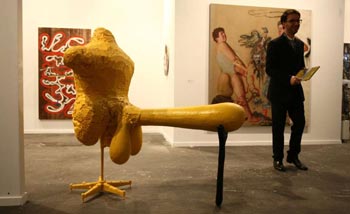 In the middle of this purpose confusion, ARCO has decreased the presence regarding to Latin American art and the most breaking-off creation (fairs such as Miami Art Basel and Frieze, respectively, are effectively managed in such coordinates). Using different terms, ARCO has neglected the markets where its action might be fully competitive.
In the middle of this purpose confusion, ARCO has decreased the presence regarding to Latin American art and the most breaking-off creation (fairs such as Miami Art Basel and Frieze, respectively, are effectively managed in such coordinates). Using different terms, ARCO has neglected the markets where its action might be fully competitive.
Paradoxically, the protection provided by the public sector and institutions to the Spanish art, can be a stopping element, if it isn’t channeled to intelligent actions with long term perspectives. That’s why there’s a clamor for more exigency beyond the risks of institutionalized populism and chauvinism.
But the course correction seems to be up and running. The most evident reform in ARCO 2011 was scenographic: the option of two pavilions, instead of the three used in the previous edition, with less participating galleries but all of them are mixed. Gallery owners were satisfied: the stands could be quietly visited and collectors had more time to make up their minds, with no crowds as seen in previous years (a contributing element has been the price of tickets set in 35 euro). The feeling is that ARCO is aiming at a more selective audience, giving privilege to collectors. We could say that the fair has been success in terms of visitors and sales, if we compare it with previous editions, thanks to the efforts made by ARCO new director, Carlos Urroz.
In general terms, the present crisis has caused collectors and investors to play safe; outstanding names and strengthened prestige, according to international criteria. This year in ARCO the highest prices were around a million euro and the lower costs were 250€. Art for every pocket. The names that collectors wanted the most are, therefore, historical artists such as Lucio Fontana or Michael Wesley. Antonio Lopez among the Spanish artists.
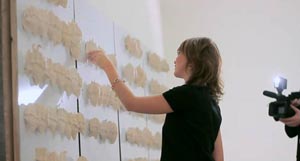 Nevertheless, ARCO’s natural trend seems to be focused on the average collector, who is more likely to invest in emerging artists (a segment calculated between 750 and 170.000 euro for this fair). It means that ARCO is sharpened as an opportunity to commercialize new artists and proposals. And this gap is not only opened by up-coming Spanish art, or the one produced in trend-setting countries, such as China and India (with works valued in some hundred thousand euro and significant markets). ARCO’s maturity crisis potentially represents a good moment for Latin American art.
Nevertheless, ARCO’s natural trend seems to be focused on the average collector, who is more likely to invest in emerging artists (a segment calculated between 750 and 170.000 euro for this fair). It means that ARCO is sharpened as an opportunity to commercialize new artists and proposals. And this gap is not only opened by up-coming Spanish art, or the one produced in trend-setting countries, such as China and India (with works valued in some hundred thousand euro and significant markets). ARCO’s maturity crisis potentially represents a good moment for Latin American art.
2011 ARCO’s bet on Latin American art was expressed in SOLO PROJECT: FOCUS LATINOAMERICA, aimed at artists whose projects are focused in the Latin American art. Even with this initiative, only 13 galleries from 6 countries (Brazil was the most represented country with 5 halls) attended ARCO, while in the previous edition 14 galleries represented the Latin American art. The presence of this subcontinent, as traditional as it is, is far from playing a leading role: from its fourteen editions, the region has only been honor guest in three editions: as Latin America and the Caribbean, in 1997, Mexico in 2005 and Brazil in 2008. It actually hasn’t been much, considering the cultural and historical links with Spain. In number terms, it isn’t casual that Mexico, Argentina and Brazil, the top attendees, are the countries with the most developed cultural institutionalism in the region (what’s explained by the strong investment that entails the transportation of works, the price per square meter and the competence). This representation, which means less than the ten percent of the total, turns to be insufficient, but it’s actually hard to surmount without the governmental support of origin countries. Such efforts should begin, in every side of the ocean, by promoting the discursive and formal criteria of a subcontinent whose identity and concerns have their own course. Beyond the search of contrasted careers or historical works, ARCO might be assumed as a space to articulate and debate the region’s art and cultural process. That has been the top mistake of the fair regarding to the Latin American art: it has had a minimum contribution so as to create an attractive and solvent context for works commercialization.
Related Publications
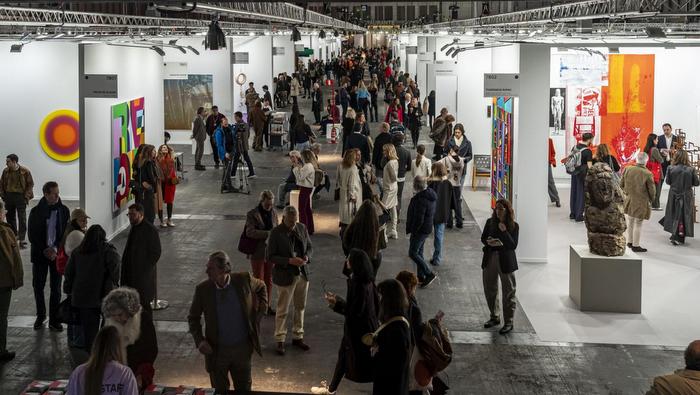
ARCOmadrid announces the participating galleries in its 45th edition
December 19, 2025